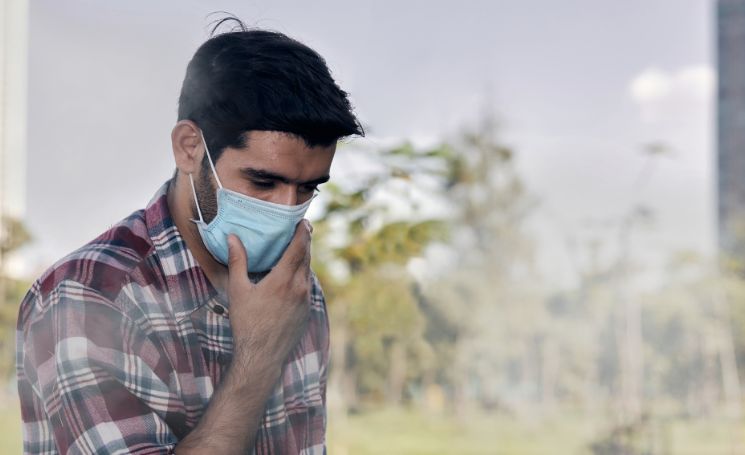As November casts a veil of smog across several countries, the pressing question arises: How can we protect ourselves in this era of increasing air pollution?
As of November, major cities in India1, Pakistan2, and even parts of the United States are choking under thick blankets of smog. In New Delhi, air quality has reached hazardous levels, leaving residents in a haze and wearing masks as they try to go about their day. Similar stories echo from Lahore, Beijing, and even parts of New York City. Smog – a deadly cocktail of smoke, dust, and chemical pollutants – has become a seasonal foe in these areas, reminding us of how modern industrialization collides with nature.
The fight against smog has, for many, become a daily battle. And, as the air grows thicker, masks become more than just a necessity; they’re a lifeline.
The Origins of Masks
My research took me down an intriguing historical path. The first protective masks, dating back to the 17th century, were worn by plague doctors.
Disclaimer: All information is gathered from public resources and is fact-checked for accuracy.
They wore peculiar, bird-beak-shaped masks filled with herbs, believing these would filter “bad air” carrying diseases. It was an era when “miasma theory” (the idea that diseases spread through poisonous air) reigned, laying the groundwork for modern respiratory protection.

By I. Columbina, ad vivum delineavit. Paulus Fürst Excud〈i〉t. – Internet Archive’s copy of Eugen Holländer,Die Karikatur und Satire in der Medizin: Medico-Kunsthistorische Studie von Professor Dr. Eugen Holländer, 2nd edn (Stuttgart:Ferdinand Enke, 1921), fig. 79 (p. 171)., Public Domain.

By Juan Antonio Ruiz Rivas – Enciclopedia Libre en Español, CC BY-SA 3.0, Link

By Flickr: Tracy – https://www.flickr.com/photos/tracyelaine/3264042469/, CC BY 2.0.
Fast forward to the early 20th century, and masks took center stage during the Spanish flu pandemic of 1918. With hundreds of thousands of lives at risk, masks became a cultural icon, a sign of solidarity, and a tool for survival.
Today’s N95 masks, created in the 1970s, are a result of decades of design evolution, crafted to filter out 95% of airborne particles. Their importance in high-risk environments and polluted cities cannot be overstated.
Mask Facts That May Surprise You
- 1. Global Mask Usage: It’s estimated that over 129 billion masks are used globally each month. Most are disposable, and many end up in landfills or oceans.
- 2. Historical Impact: Masks are more than a health accessory. They’re a cultural marker, worn for over 400 years by doctors, soldiers, and everyday people facing environmental and health threats.
- 3. Late 1800s Surgeons: With advancements in germ theory, masks began to appear in surgical settings. A French surgeon, Dr. Berger, is among the first known to have worn a mask in surgery.
- 4. Mass Mask-Wearing for the First Time: During the 1918 Spanish flu pandemic, masks became widely used by the general public as a method of controlling the spread of the virus.
Modern Masks and How Do I Dispose of
As pollution and respiratory health issues rise, understanding the various types of masks and their disposal methods becomes essential for both health and the environment.
With billions of masks in circulation, disposal has become a significant environmental concern. Single-use masks, often made with non-biodegradable materials, pose risks to wildlife and ecosystems. Here’s how we can dispose of them responsibly:
In general, masks are not designed for recycling due to biologicals contamination.
- 1. CPAP Masks: CPAP masks that are worn out or damaged can compromise airflow quality and comfort. Replacing masks every few months ensures a better seal, reduces bacterial buildup, and provides a more comfortable experience. 3Additionally, with billions of CPAP masks used worldwide, responsible disposal helps mitigate environmental impact. Manufacturer take-back programs are the best disposal option and local recycling are steps toward reducing the medical waste footprint. If no recycling option is available, seal used masks in a bag before discarding in household waste.
- 2. Surgical Masks: Intended for single use only, surgical masks should be discarded after each wear. Fold the mask inwards, seal it in a small bag to avoid contamination, and place it in regular waste. Avoid putting these masks in recycling bins as they’re not recyclable.
- 3. N95 and KN95 Masks: Recommended for single or limited use, but reuse can be extended with proper storage (away from contamination). Dispose of by sealing in a bag and placing in regular waste. N95 masks should not be recycled due to contamination risks.
- 4. Cloth Masks: Wash regularly and reuse. Cloth masks can last several months, but should be replaced when visibly worn out. When discarding, check if your area has textile recycling options. Otherwise, they can be safely disposed of in regular waste.
- 5. Specialized Respirators and Industrial Masks: Follow industry guidelines, as some industrial masks come with replaceable filters while others are disposable. Dispose of according to OSHA guidelines or local hazardous waste protocols. Some filters may contain materials that require specialized disposal.














Leave a Reply